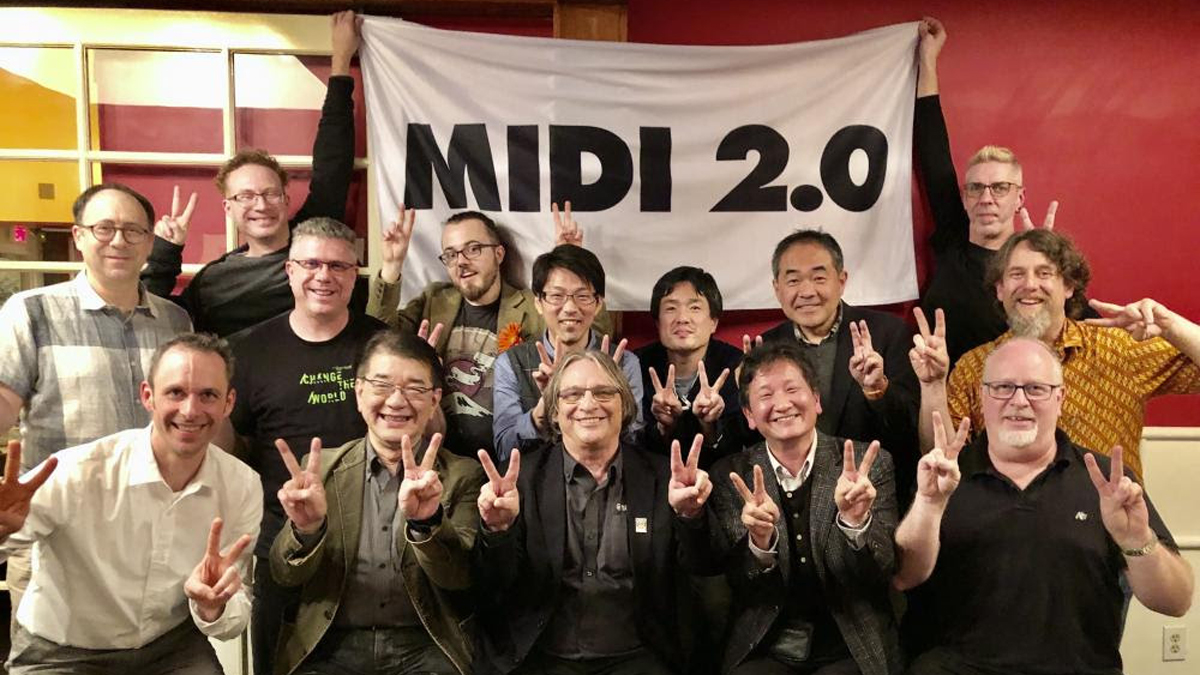MIDI 2.0 spec confirmed: “the biggest advance in music technology in decades”
Best of 2020: MIDI Manufacturers Association adopts the new standard

It’s been years in the planning, but now the core spec for the MIDI 2.0 standard has finally been confirmed and adopted by the MIDI Manufacturers Association. In fact, the MMA is calling MIDI 2.0 "the biggest advance in music technology in decades".
The decision was taken at the MMA’s annual meeting, which took place at the recent Winter NAMM Show. The five core documents adopted were as follows:
- MIDI Capability Inquiry (Update)
- Specification for Universal MIDI Packet (UMP) Format and MIDI 2.0 Protocol
- Common Rules for MIDI CI Profiles
- Common Rules for MIDI-CI Property Exchange
- Property Exchange Foundational Resources and Basic Resources
If that’s all a bit technical and dry for your taste (check out the press release below for more details), you might be more interested to learn that the well-attended NAMM session - it was standing room only - also featured demonstrations from Korg, Roland and Yamaha, who showed prototype MIDI 2.0 devices sending and receiving MIDI 2.0 protocol messages.
• The best MIDI keyboards: Mac, PC, iPhone and iPad MIDI keyboards for beginner and pro musicians
Roland, of course, also launched a finished MIDI 2.0-compatible controller in the shape of the A-88MKII.
You can find out more about MIDI 2.0 and what it means for musicians in our in-depth investigation.
Full MIDI 2.0 specifications from the MMA
PRESS RELEASE: Back in 1983, musical instrument companies that competed fiercely against one another nonetheless banded together to create a visionary specification—MIDI 1.0, the first universal Musical Instrument Digital Interface. Nearly four decades on, it's clear that MIDI was crafted so well that it has remained viable and relevant. Its ability to join computers, music, and the arts has become an essential part of live performance, recording, smartphones, and even stage lighting.
Get the MusicRadar Newsletter
Want all the hottest music and gear news, reviews, deals, features and more, direct to your inbox? Sign up here.
Now, MIDI 2.0 takes the specification even further, while retaining backward compatibility with the MIDI 1.0 gear and software already in use. Here's why MIDI 2.0 is the biggest advance in music technology in decades.
MIDI 2.0 Means Two-way MIDI Conversations
MIDI 1.0 messages went in one direction: from a transmitter to a receiver. MIDI 2.0 is bi-directional and changes MIDI from a monologue to a dialog. For example, with the new MIDI-CI (Capability Inquiry) messages, MIDI 2.0 devices can talk to each other, and auto-configure themselves to work together. They can also exchange information on functionality, which is key to backward compatibility—MIDI 2.0 gear can find out if a device doesn't support MIDI 2.0, and then simply communicate using MIDI 1.0.
Higher Resolution, More Controllers and Better Timing
To deliver an unprecedented level of nuanced musical and artistic expressiveness, MIDI 2.0 re-imagines the role of performance controllers, the aspect of MIDI that translates human performance gestures to data computers can understand. Controllers are now easier to use, and there are more of them: over 32,000 controllers, including controls for individual notes. Enhanced, 32-bit resolution gives controls a smooth, continuous, "analog" feel. New Note-On options were added for articulation control and precise note pitch. In addition, dynamic response (velocity) has been upgraded. What's more, major timing improvements in MIDI 2.0 can apply to MIDI 1.0 devices—in fact, some MIDI 1.0 gear can even "retrofit" certain MIDI 2.0 features.
Profile Configuration
MIDI gear can now have Profiles that can dynamically configure a device for a particular use case. If a control surface queries a device with a "mixer" Profile, then the controls will map to faders, panpots, and other mixer parameters. But with a "drawbar organ" Profile, that same control surface can map its controls automatically to virtual drawbars and other keyboard parameters—or map to dimmers if the profile is a lighting controller. This saves setup time, improves workflow, and eliminates tedious manual programming.
Property Exchange
While Profiles set up an entire device, Property Exchange messages provide specific, detailed information sharing. These messages can discover, retrieve, and set many properties like preset names, individual parameter settings, and unique functionalities—basically, everything a MIDI 2.0 device needs to know about another MIDI 2.0 device. For example, your recording software could display everything you need to know about a synthesizer onscreen, effectively bringing hardware synths up to the same level of recallability as their software counterparts.
Built for the Future
MIDI 2.0 is the result of a global, decade-long development effort. Unlike MIDI 1.0, which was initially tied to a specific hardware implementation, a new Universal MIDI Packet format makes it easy to implement MIDI 2.0 on any digital transport (like USB or Ethernet). To enable future applications that we can't envision today, there's ample space reserved for brand-new MIDI messages.
Further development of the MIDI specification, as well as safeguards to ensure future compatibility and growth, will continue to be managed by the MIDI Manufacturers Association working in close cooperation with the Association of Musical Electronics Industry (AMEI), the Japanese trade association that oversees the MIDI specification in Japan.
MIDI will continue to serve musicians, DJs, producers, educators, artists, and hobbyists - anyone who creates, performs, learns, and shares music and artistic works - in the decades to come.



I’m the Deputy Editor of MusicRadar, having worked on the site since its launch in 2007. I previously spent eight years working on our sister magazine, Computer Music. I’ve been playing the piano, gigging in bands and failing to finish tracks at home for more than 30 years, 24 of which I’ve also spent writing about music and the ever-changing technology used to make it.









